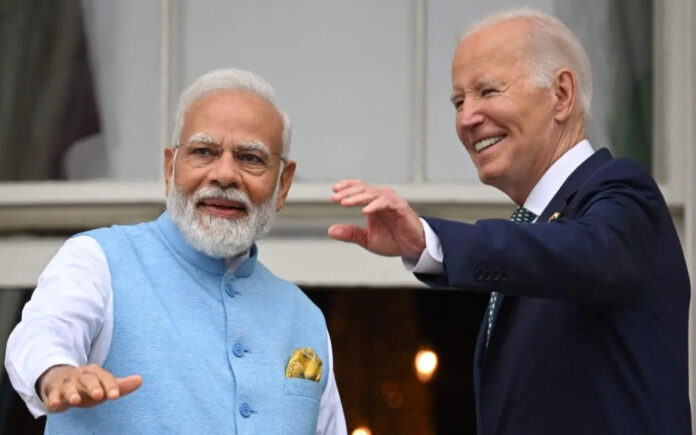Washington/New York: The United States has expressed its support for India’s impending $3.9 billion procurement of 31 armed MQ-9B Predator drones. This acquisition is a significant step in strengthening the defense partnership between the two nations, which aims to enhance military interoperability, intelligence sharing, space and cyber cooperation, and collaboration in defense innovation—all in response to China’s aggressive actions in the Indo-Pacific region.
The government-to-government agreement for the 31 high-altitude, long-endurance remotely piloted aircraft includes 15 Sea Guardian drones designated for the Navy and 8 Sky Guardians each for the Army and the Indian Air Force (IAF). The deal is expected to be finalized in mid-October, following the completion of techno-commercial negotiations, as per several media reports.
“President Joe Biden welcomed the progress towards India concluding procurement of 31 General Atomics MQ-9Bs and their associated equipment, which will enhance the intelligence, surveillance and reconnaissance (ISR) capabilities of India’s armed forces across all domains,” a joint fact sheet issued after the Modi-Biden talks stated.
This drone deal will push the total value of Indian defense contracts awarded to the US beyond $25 billion since 2007. India is now emphasizing co-development and co-production of advanced weapon systems, aligning with the ambitious defense-industrial cooperation roadmap established in June last year.
While no joint projects have been formalized yet, Modi and Biden noted the “remarkable progress” made under this roadmap, including “ongoing collaboration to advance priority co-production arrangements for jet engines, munitions, and ground mobility systems.”
For example, India and the US are engaged in techno-commercial discussions to jointly produce GE-F414 jet engines for the Tejas Mark-2 fighters, featuring an 80% transfer of technology for approximately $1 billion.
The fact sheet also highlighted the US’s demonstration of its Stryker armored infantry combat vehicle, equipped with Javelin anti-tank guided missiles, during the joint “Yudh Abhyas” exercise that concluded in Rajasthan recently.
Reports indicate that discussions are at an advanced stage for the joint production of the eight-wheeled Strykers, with the Indian Army projecting a need for around 530 such vehicles, although some critics argue that indigenous options are being overlooked.
Also Read | Russian Black Sea Fleet Executes Combat Drills Over the Black Sea
Both leaders welcomed the expansion of other defense-industrial partnerships, including the co-development and co-production of unmanned surface vehicle systems to enhance maritime domain awareness and bolster India’s maintenance, repair, and overhaul (MRO) capabilities for aircraft and unmanned aerial vehicles.
Modi and Biden commended ongoing efforts to deepen military cooperation and interoperability to maintain a free and open Indo-Pacific, noting that India hosted the largest and most complex bilateral tri-Service exercise, “Tiger Triumph”, in March.
Also Read | Sri Lanka’s New President: Anura Dissanayake Breaks the Mold
“The leaders commended work to advance cooperation in advanced domains, including space and cyber, and looked forward to the November 2024 bilateral cyber engagement to enhance the cyber cooperation framework. Areas of new cooperation will include threat information sharing, cybersecurity training, and collaboration on vulnerability mitigation in energy and telecommunications networks,” the fact sheet added.
Under a Memorandum of Understanding (MoU) on the deployment of military liaison officers, India will assign a Colonel-rank officer to the US Special Operations Command in Florida, while another officer will be posted to the Indo-Pacific Command in Hawaii.



